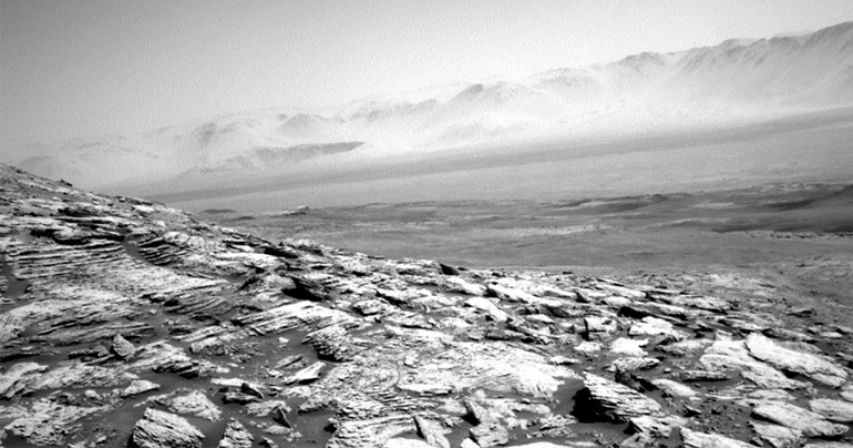Scientists say they have come up with a potential way to make oxygen on Mars
- 4 years ago

By Katie Hunt, CNN
In a high-stakes mission that could take five years to complete, NASA wants to land astronauts on Mars in the 2030s.
Transporting enough oxygen and fuel on a spacecraft to sustain the mission for anywhere near that length of time, however, isn't currently viable.
The way NASA plans to address this problem is by deploying MOXIE, or the Mars Oxygen in Situ Resource Utilization Experiment. This system is in the testing phase on the Mars Perseverance rover, which launched in July. The apparatus will convert the carbon dioxide that makes up 96% of the gas in the red planet's' atmosphere into oxygen.
On Mars, oxygen is only 0.13% of the atmosphere, compared to 21% of the Earth's atmosphere.
Scientists at Washington University in St. Louis have now said they may have come up with another technique that could complement MOXIE.
The MOXIE system essentially produces oxygen like a tree -- pulling in the Martian air with a pump and using an electrochemical process to separate two oxygen atoms from each molecule of carbon dioxide, or CO2.
The experimental technique proposed by Vijay Ramani and his colleagues uses a completely different resource -- salty water in lakes beneath the Martian surface.
The study by Ramani, a distinguished professor at Washington University's department of energy, environmental and chemical engineering, and his colleagues published last week in the journal PNAS.
Most of the water known to exist on Mars is ice -- both at the poles and the planet's midlatitudes. However, scientists detected two years ago what looked like a salty lake under the surface of Mars' southern ice cap. And more recent research has found additional evidence of the lake and revealed a number of smaller salty ponds nearby.
"The presence of the brine is fortuitous because it lowers freezing point of the water. You take the salty, brackish water and electrolyze that. Our process takes the water and splits it into hydrogen and oxygen," Ramani said.
The method proposed in the new paper, however, assumes that these brines are readily available on Mars, said Michael Hecht, NASA's principal investigator for MOXIE and associate director for research management at the Massachusetts Institute of Technology's Haystack Observatory.
"There hasn't been any substantive evidence of bulk brine deposits, and while there are likely some in frozen form I absolutely don't expect to find them as liquids," said Hecht via email. "What the authors are overlooking is that while the melting point might be - 70C, the frostpoint on Mars is also around -70C, so if these liquid brines did exist they would eventually just evaporate (more accurately, sublimate) away."
Hecht said, one day, electrolysis of water would be important for fuel production on Mars but not necessarily in the way outlined in the paper.
"Regular ice ... is plentiful on Mars and not hard to find. There also isn't any reason not to melt the ice to get water, which can then be co-electrolyzed with CO2 to ultimately produce both oxygen and methane for fuel," he said via email.
Ramani described their research project as an "initial foray" -- his team had specialized in seawater electrolysis.
"We came across these reports about saltwater deposits on Mars and we said why not," he said.
"We aren't funded by NASA or any space-related program, but our hope is that if we get sufficient traction with this work, then in future we hope to propose this as a complement to MOXIE and other systems."
"Our hope is in the next 10, 15 years we can advance our system to make it competitive."
The MOXIE team at NASA will study how the little, toaster-size version operates on the Perseverance rover and apply lessons learned for developing a larger and more powerful system for a crewed mission.
The experiment will help researchers learn how a number of environmental factors, including dust storms, winds and sand, and the temperature of the carbon dioxide, could affect MOXIE. The scientists also need to know how radiation could impact its software.
A full-scale MOXIE system on Mars might be a bit larger than a household stove and weigh around 2,200 pounds (1,000 kilograms)-- almost as much as Perseverance itself. Work is ongoing to develop a prototype for one in the near future, NASA has said.
Hecht said that NASA's focus would remain on extracting oxygen from Mars' atmosphere. While the ice could be useful in the future, he said, it should be regarded as a mineral that has to be prospected, extracted and refined before it can be used. What's more, the ice on Mars is found predominantly at high latitudes, which isn't where NASA intends to land humans, at least at first, he added.
"Extracting oxygen from the air is easy by comparison because it's everywhere, you don't have to go dig anything up, and that's why we're doing it first."
CNN's Ashley Strickland contributed to this report
Comments